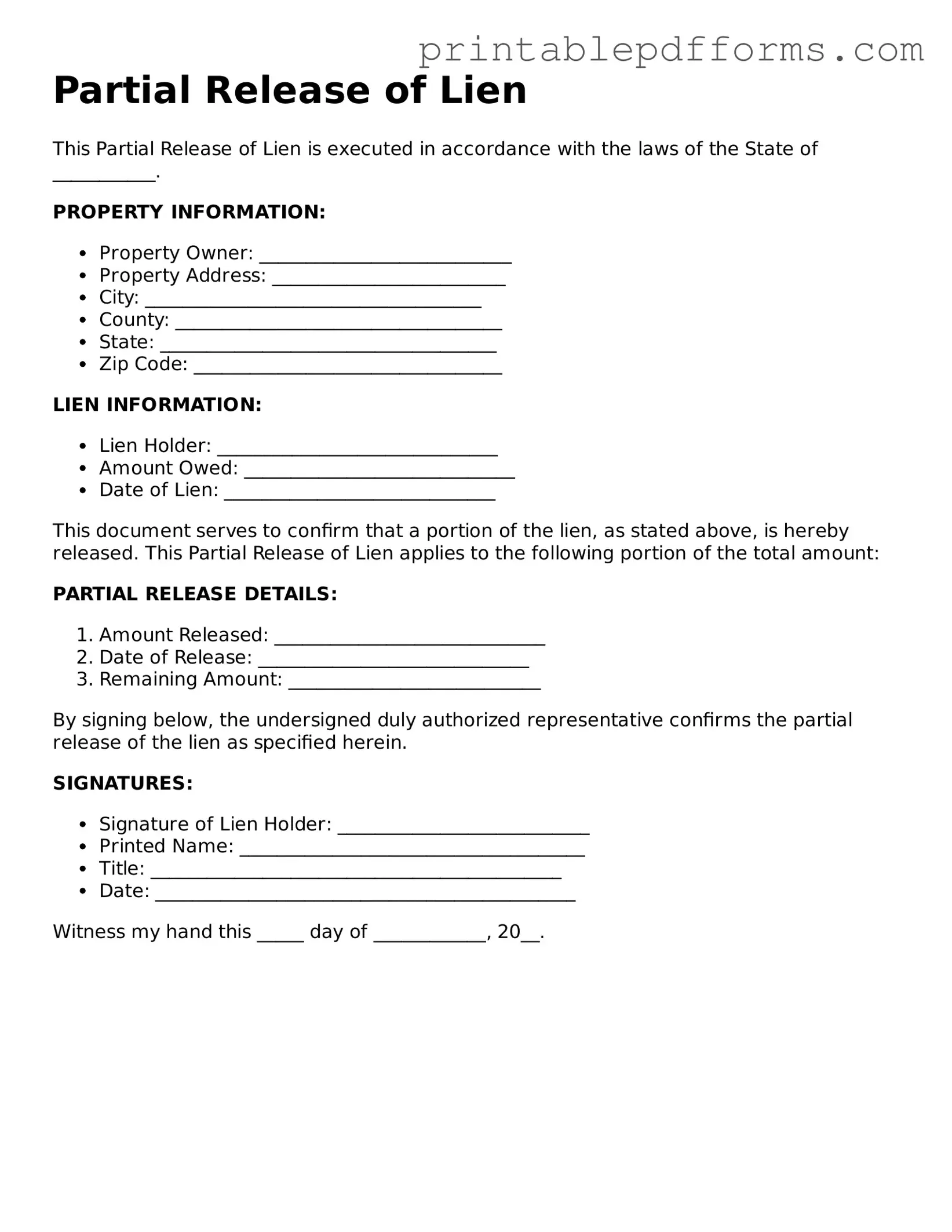A Partial Release of Lien form is a legal document used to remove a lien from a specific portion of a property or a particular amount of money owed. This form is typically utilized when a contractor, subcontractor, or supplier has received payment for part of their work or materials but still retains a lien on the property for the remaining balance.
Why would someone use a Partial Release of Lien?
This form is beneficial for both property owners and contractors. Property owners may want to clear a portion of the lien to sell or refinance their property. Contractors may use it to confirm receipt of payment for completed work while still retaining a lien for any outstanding amounts.
The form typically requires the following information:
-
The name and address of the lien claimant (the party releasing the lien).
-
The name and address of the property owner.
-
A description of the property affected by the lien.
-
The amount of the lien being released.
-
The date of the original lien filing.
-
Any relevant contract or project details.
How does a Partial Release of Lien affect the remaining lien?
When a Partial Release of Lien is executed, it only removes the specified portion of the lien. The remaining lien stays in effect for the unpaid balance. This means that the lien claimant can still pursue the outstanding amount if necessary.
Do I need to file the Partial Release of Lien with a government office?
Yes, the Partial Release of Lien should be filed with the appropriate government office, usually the county recorder or clerk's office where the original lien was recorded. This ensures that the release is officially documented and recognized in public records.
Is there a deadline for filing a Partial Release of Lien?
While there is no universal deadline for filing a Partial Release of Lien, it is advisable to file it promptly after receiving payment for the completed work. Delaying the filing may complicate matters for both parties involved.
Can a Partial Release of Lien be contested?
Yes, a Partial Release of Lien can be contested if there are disputes regarding the payment or the work completed. If a property owner believes that the lien claimant did not fulfill their obligations, they may challenge the release in court.
What happens if I do not file a Partial Release of Lien?
If a Partial Release of Lien is not filed, the lien remains in place for the entire amount. This can create issues for the property owner, especially if they wish to sell or refinance the property. It can also lead to complications for the contractor regarding their claims for unpaid work.
A Partial Release of Lien form can typically be obtained from legal stationery stores, online legal document services, or local government offices. It is important to ensure that the form complies with state-specific requirements.
